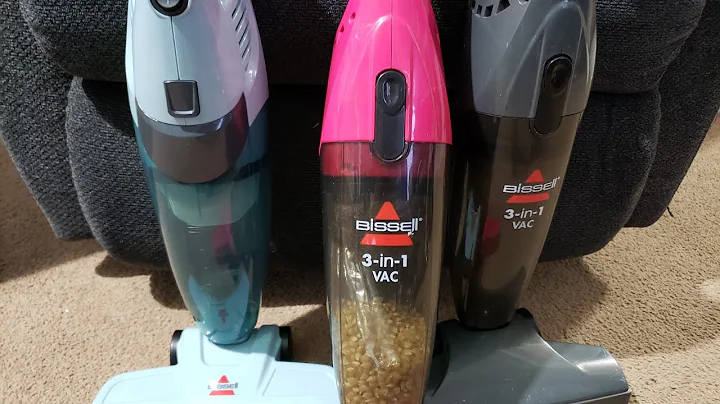Accurate Weight Measurement for Babies: Infant Scales and Calibration
Table of Contents
- Introduction
- Understanding Infant Scales
- 2.1 Analog or Non-Electronic Infant Scales
- 2.2 Basic Parts of an Infant Scale
- Proper Usage of Infant Scales
- 3.1 Indications for Using an Infant Scale
- 3.2 Terminology for the Parts of an Infant Scale
- 3.3 Calibrating an Infant Scale
- 3.4 Performing a Weighing Using the Infant Scale
- 3.5 Transporting the Scale
- 3.6 Potential Problems and Safety Considerations
- Conclusion
Introduction
Infant scales are an essential tool for monitoring the growth and development of newborns and infants. Proper usage and calibration of these scales are crucial to ensure accurate weight measurements. This article will guide you through the process of using and calibrating infant scales, as well as provide important safety considerations. By following these guidelines, you will be able to confidently weigh babies and track their weight accurately.
Understanding Infant Scales
Analog or Non-Electronic Infant Scales
Analog or non-electronic infant scales, such as the Sika mechanical infant scale, are commonly used in healthcare settings. These scales work by comparing the weight of an infant to a known weight using a lever and sliding weights. The position of the sliding weights on the lever indicates the baby's weight.
Basic Parts of an Infant Scale
To understand the proper usage of infant scales, it's important to familiarize yourself with the basic parts of the device. These include:
-
The weighing basket: This is where the infant is placed during weighing. It is designed with curved or protective features to prevent the baby from falling out and getting injured.
-
The sliding weights: There are two sliding weights on the scale - the large weight and the small weight. These weights can be moved along a metal beam to adjust the balance of the lever.
-
The beam balance: This is the lever that moves up and down. It indicates whether the position of the sliding weights matches the baby's weight. When balanced, the beam will be horizontal, and the pointer and counter pointer will be level.
-
Level indicator: Some scales have a built-in level indicator to ensure accuracy. If present, the scale is level when the air bubble lies entirely within the designated circle or lines. In the absence of a built-in level, an external level can be used inside the weighing basket to ensure proper leveling.
Proper Usage of Infant Scales
Indications for Using an Infant Scale
Infant scales are used to weigh babies at birth and track their weight as they grow. Regular weight measurements are essential to monitor a baby's growth and ensure they are developing properly.
Terminology for the Parts of an Infant Scale
To effectively communicate and understand the usage of an infant scale, it is important to be familiar with the terminology used. The weighing basket, sliding weights, beam balance, and level indicator are key components that facilitate accurate weight measurements.
Calibrating an Infant Scale
Before using an infant scale for weighing, it is crucial to calibrate it to ensure accurate measurements. Calibration involves adjusting the balance of the lever by aligning the pointer and counter pointer without any weight on the scale. This ensures that the scale is properly balanced and ready for use.
Performing a Weighing Using the Infant Scale
To perform a weighing using an infant scale, follow these steps:
- Ensure the scale is level and both the large and small weights are in their zero locations.
- Place the baby in the weighing basket and observe the position of the beam balance.
- Slide the large weight to higher increments until the beam balance starts to level out.
- Adjust the small sliding weight until the beam balance is fully level and stays level.
- Note the numbers at which both the large and small weights are placed. This indicates the weight of the baby.
Transporting the Scale
When transporting the infant scale, it is important to ensure the tray is securely attached to the bottom half of the device and the side latches are locked. Activating the transport lock and securing the sliding weights with a rubber band can prevent damage during transportation. Cleaning the scale with a sanitary wipe prior to transport and each use is recommended.
Potential Problems and Safety Considerations
If you encounter problems with the infant scale, such as the beam not moving or incorrect weight readings, there are several potential issues to consider. Make sure that the scale is properly set up, with the transport locks released and no obstructions blocking the beam's movement. Verify that the scale is properly calibrated using the tear weight. If necessary, adjust the tear weight to counteract any weight offset.
It is always advisable to consult the specific service manual for your infant scale and seek professional assistance when in doubt. Safety should be a top priority, and following the manufacturer's recommendations and guidelines is crucial.
Conclusion
Proper usage and calibration of infant scales are essential for accurate weight measurements and monitoring the growth of newborns and infants. By understanding the basic parts of an infant scale, following the correct weighing procedures, and ensuring safety considerations, healthcare professionals and caregivers can confidently track the weight and development of babies. Regular weight measurements are crucial for early identification of any health concerns and to ensure proper growth and well-being.
Highlights
- Infant scales are essential tools for monitoring the growth and development of newborns and infants.
- Proper usage and calibration of infant scales ensure accurate weight measurements.
- Analog or non-electronic infant scales work by comparing the baby's weight to a known weight using a lever and sliding weights.
- The weighing basket, sliding weights, beam balance, and level indicator are the key parts of an infant scale.
- Regular weight measurements using infant scales are necessary for monitoring a baby's growth and development.
- Calibration of the scale is necessary to ensure accurate weight measurements.
- Transporting the infant scale requires securely attaching the tray, activating transport locks, and cleaning the scale.
- Potential problems with the scale can be addressed by checking the set-up, calibration, and troubleshooting as necessary.
- Safety considerations and following manufacturer's guidelines are crucial when using infant scales.
FAQ
Q: How often should I weigh my baby using an infant scale?
A: It is recommended to weigh your baby regularly in the first few weeks and then at least once a month until they reach six months of age. After six months, weighing every two to three months is usually sufficient.
Q: Can I use an infant scale at home?
A: Yes, infant scales are available for home use. They can be useful for monitoring your baby's growth and ensuring they are reaching weight milestones.
Q: What should I do if the scale readings are inconsistent or fluctuating?
A: Inconsistent or fluctuating scale readings could indicate a calibration issue or an external factor affecting the measurements. Make sure to check the scale's calibration and ensure a stable weighing environment, free from vibrations or movements.
Q: Are there any safety precautions to take when using an infant scale?
A: Yes, some safety precautions to consider when using an infant scale include ensuring the scale is level, securing the baby in the weighing basket, and maintaining a safe distance from the scale to prevent accidental falls or injuries.
Q: Can I use an infant scale for weighing objects other than babies?
A: Infant scales are specifically designed and calibrated for weighing babies. They may not provide accurate measurements for other objects due to differences in weight distribution and size. It is recommended to use appropriate scales for weighing objects other than babies.
Resources:







